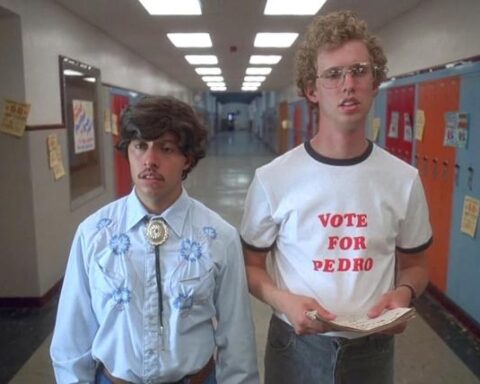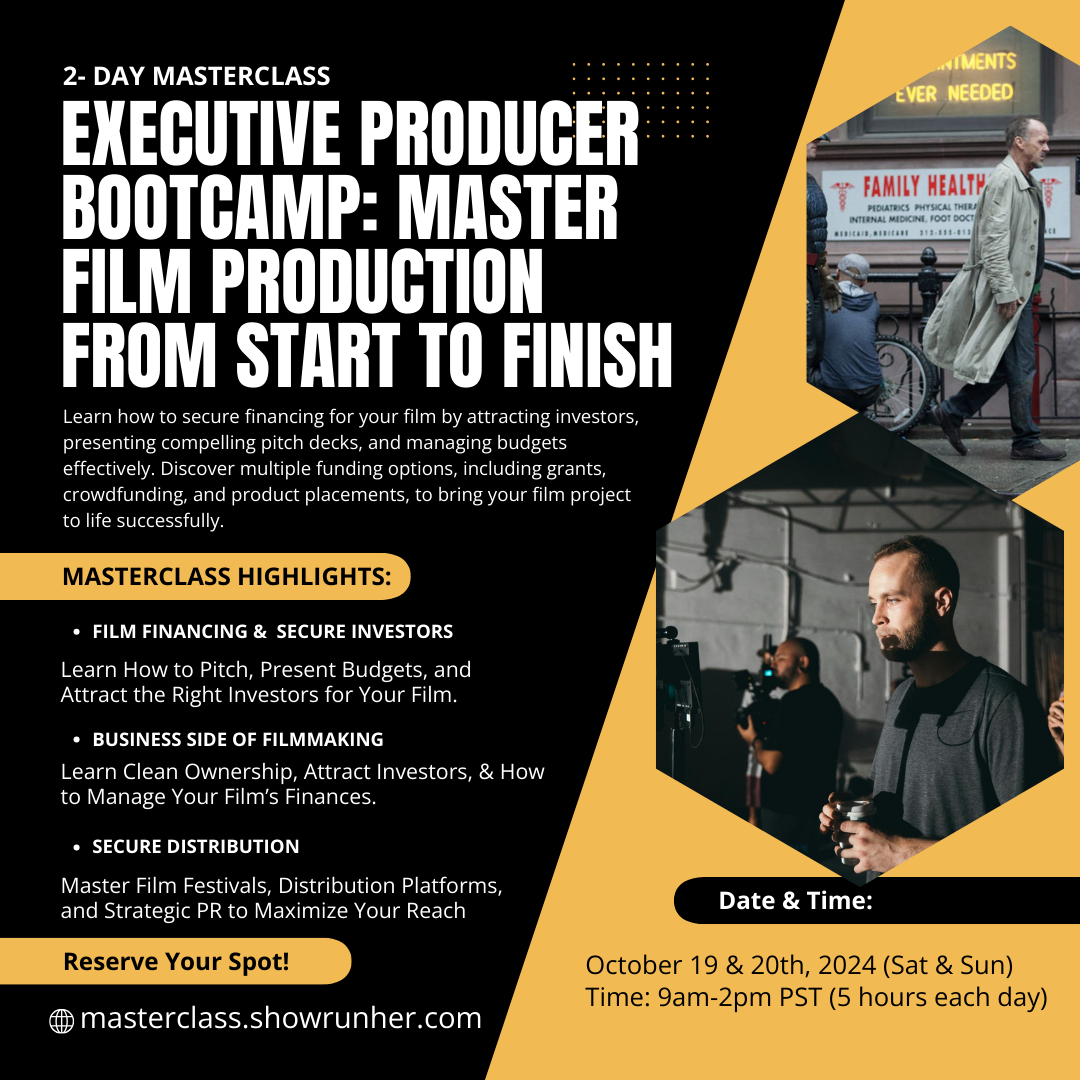As an indie filmmaker, securing the rights to the intellectual property (IP) involved in your project is crucial to protecting your work, avoiding legal issues, and ensuring that you can distribute your film without hurdles. Whether you’re adapting a book, using someone else’s music, or filming in a public place, understanding IP law is essential to avoid potential lawsuits and financial losses. In this comprehensive guide, we’ll explore the various aspects of intellectual property that indie filmmakers need to be aware of, offer tips for securing the necessary rights, and highlight common mistakes to avoid.
Respecting intellectual property isn’t just about legality—it’s about honoring the creativity and effort that go into every work of art.
Understanding Intellectual Property in Filmmaking
Intellectual property refers to the creations of the mind, such as inventions, literary and artistic works, symbols, names, images, and designs used in commerce. For filmmakers, IP primarily involves copyrights, trademarks, and, occasionally, patents. Here’s a breakdown of the most relevant forms of IP for indie filmmakers:

- Copyright: Copyright protects original works of authorship, including films, scripts, music, artwork, and more. When you create a film, the script, the recorded footage, and the final edited product are all protected by copyright.
- Trademark: Trademarks protect symbols, names, and slogans used to identify goods or services. If you’re using brand names, logos, or other trademarked materials in your film, you’ll need to secure the appropriate rights to avoid infringement.
- Right of Publicity: This is the right of individuals to control the commercial use of their name, image, likeness, or other recognizable aspects of their persona. If your film features real people, especially in a commercial context, you may need their permission.
- Patent: While less common in filmmaking, patents protect inventions or processes. This might be relevant if your film involves unique technology or innovations.
Securing Rights for Your Film: Key Areas to Consider
Securing the necessary rights for your film involves more than just making sure you own the script. You need to consider the rights to all the creative content used in your film, from music to locations. Here’s what you need to know:
1. Securing Script Rights
If you’re working with an original script that you wrote, you automatically own the copyright to that script. However, if you’re adapting someone else’s work (such as a novel, short story, or another film), you’ll need to secure the adaptation rights from the copyright holder.
- Optioning a Script: An option agreement gives you the exclusive right to purchase the script or book rights for a specified period. During this time, you can develop the project and seek funding without worrying about another filmmaker purchasing the rights.
- Buying the Rights: After the option period, if you decide to move forward with the project, you’ll need to negotiate the purchase of the rights. Make sure this agreement clearly outlines the terms of use, royalties, and any other financial obligations.
2. Music Rights: Licensing Songs for Your Film
Using music in your film can significantly enhance the emotional impact of your scenes. However, it’s crucial to secure the rights to any music you use to avoid legal issues. There are two main types of music rights you need to be aware of:
- Synchronization (Sync) Rights: These rights allow you to synchronize a piece of music with visual images in your film. You’ll need to secure sync rights from the music publisher.
- Master Use Rights: If you’re using a specific recording of a song, you’ll also need to obtain the master use rights from the owner of the recording, usually the record label.
It’s worth noting that these licenses can be expensive, so indie filmmakers often opt for royalty-free music or work with independent musicians to create original scores.
3. Securing Rights for Locations
Filming on location requires more than just logistical planning; you also need to secure the appropriate rights and permits. Depending on the location, this can involve multiple layers of permission.
- Private Property: If you’re filming on private property, you’ll need to secure a location release form from the property owner. This form should grant you the right to film on the property and use the footage in your film.
- Public Property: Filming on public property often requires permits from local government authorities. Make sure you check the specific requirements for your location, as failing to secure the necessary permits can result in fines or legal action.
- Landmarks and Recognizable Buildings: Some buildings and landmarks are trademarked, meaning you’ll need permission to feature them prominently in your film. Always check the legal status of any prominent locations you plan to use.
4. Talent Releases: Securing Rights for Actors and Extras
Anytime you film someone, you need their permission to use their likeness in your film. This applies to both actors and extras.
- Actor Contracts: For principal actors, you’ll typically include a clause in their contract that grants you the rights to use their image and performance in your film.
- Extras Release Forms: For extras or background talent, have them sign a release form granting you permission to use their likeness in your film. This is especially important if your film is commercial in nature or will be distributed widely.
5. Securing Rights for Art, Logos, and Brands
If your film features artwork, logos, or recognizable brands, you’ll need to secure the appropriate rights to avoid trademark infringement.
- Artwork and Designs: If your film includes artwork, whether as part of the set design or in the background, you need permission from the artist or copyright holder to include it in your film.
- Logos and Brands: Be cautious when featuring logos or branded products in your film. Even if they appear incidentally, you could be at risk of trademark infringement if they are prominently featured without permission.
Common Mistakes to Avoid in Securing Rights

Securing rights can be a complex process, and indie filmmakers often make mistakes that can lead to legal complications down the line. Here are some common pitfalls to avoid:
1. Assuming Fair Use Applies
Many filmmakers assume that their use of copyrighted material falls under “fair use,” a legal doctrine that allows limited use of copyrighted material without permission. However, fair use is a complex legal standard with specific requirements, and it’s not a blanket excuse for using copyrighted content. Always consult with a lawyer to determine if your use truly qualifies as fair use.
2. Failing to Document Agreements
Verbal agreements are not enough when it comes to securing rights. Always get everything in writing, whether it’s an option agreement for a script, a location release form, or a music license. Proper documentation protects you in case of disputes and ensures that all parties are clear on the terms.
3. Overlooking Public Domain Works
Works in the public domain are free to use without securing rights, but it’s important to confirm that the work is indeed in the public domain. Just because something is old doesn’t mean it’s free to use—copyrights can be renewed, and some works may still be under protection even if they were created many years ago.
4. Ignoring International Rights Issues
If you plan to distribute your film internationally, you need to consider the rights in every country where your film will be shown. Copyright laws vary by country, and a license or permission that covers the United States may not cover other regions. Ensure that your rights agreements are comprehensive enough to cover global distribution.
5. Neglecting to Clear All Aspects of Your Film
Sometimes filmmakers focus on the major elements—script, music, locations—while neglecting smaller details like background images, incidental music, or fleeting appearances of brand logos. Make sure to clear every aspect of your film to avoid potential legal issues. This includes seemingly minor details like background artwork, posters, or even T-shirts with recognizable logos worn by extras.
Tips for Securing Rights Efficiently
Securing rights doesn’t have to be a daunting process. By following these tips, you can streamline the process and ensure that your film is legally protected:
1. Start Early
Begin the rights clearance process as early as possible in pre-production. The more time you allow for securing rights, the less likely you are to encounter delays or legal issues later in the production process. Early planning also gives you time to negotiate better deals or find alternative solutions if certain rights are too expensive or difficult to obtain.
2. Work with a Lawyer

While it might be tempting to handle rights clearance on your own to save money, it’s often worth investing in legal counsel, especially for complex issues like music licensing or adaptation rights. A lawyer with experience in entertainment law can help you navigate the process, draft contracts, and ensure that all your legal bases are covered.
3. Negotiate Licenses and Permissions
Don’t assume that the initial asking price for a license is set in stone. Many rights holders are open to negotiation, especially if you can offer something in return, such as exposure or a credit in the film. Be polite and professional in your negotiations, and be prepared to compromise if necessary.
4. Use Royalty-Free or Creative Commons Content
If securing rights for certain content is prohibitively expensive, consider using royalty-free or Creative Commons-licensed content instead. There are numerous websites where you can find music, images, and other content that are free to use or available for a small fee. Just be sure to read the terms of use carefully to ensure that the content is appropriate for your project.
5. Keep Detailed Records
Maintain a thorough record of all rights agreements, licenses, and permissions. This includes keeping copies of contracts, emails, and any other correspondence related to rights clearance. Detailed records are invaluable if you ever need to prove that you secured the appropriate rights or if a dispute arises.
The Role of Clearance Companies
If your film involves a significant amount of copyrighted material—such as extensive use of music, archival footage, or brand placements—you might want to consider working with a clearance company. These companies specialize in securing rights for all the content in your film, ensuring that everything is legally cleared for distribution.
- What Clearance Companies Do: A clearance company handles the research, negotiation, and licensing of all copyrighted materials in your film. They can also advise you on potential legal risks and help you navigate complex issues, such as fair use or public domain determinations.
- When to Use a Clearance Company: Consider using a clearance company if your film has many copyrighted elements or if you’re distributing your film widely, such as in theaters or through major streaming platforms. While this service comes with a cost, it can save you time and reduce the risk of legal issues.
Understanding Fair Use in Filmmaking
Fair use is a legal doctrine that allows limited use of copyrighted material without obtaining permission from the rights holders. However, it’s important to understand that fair use is not a free pass and is subject to strict legal criteria. Whether your use qualifies as fair use depends on several factors:
- Purpose and Character of Use: Non-commercial, educational, or transformative uses are more likely to be considered fair use. If your film is for profit, this factor may weigh against fair use.
- Nature of the Copyrighted Work: Use of factual works is more likely to be considered fair use than use of fictional or highly creative works.
- Amount and Substantiality: Using a small portion of a copyrighted work is more likely to be considered fair use. However, even a small portion can be problematic if it constitutes the “heart” of the work.
- Effect on the Market: If your use of the copyrighted material could negatively impact the market for the original work, it’s less likely to be considered fair use.
Given the complexity of fair use, it’s advisable to consult with a legal professional if you plan to rely on this doctrine for any part of your film.
What to Do If You Can’t Secure Rights
If you’re unable to secure the necessary rights for a particular piece of content, don’t despair—there are still options available to you:
- Create Original Content: If you can’t use a specific piece of music, artwork, or footage, consider creating original content instead. This could involve hiring a composer for original music, commissioning an artist to create custom artwork, or filming new footage to replace copyrighted material.

- Use Stock Footage or Music: There are many online platforms that offer high-quality stock footage and music that are either royalty-free or available for a one-time fee. This can be a cost-effective way to get the content you need without dealing with complex rights issues.
- Find Public Domain Alternatives: Works in the public domain can be used freely without permission. If you can’t secure the rights to a copyrighted work, look for similar works that are in the public domain.
- Seek Licensing for Similar Content: If you can’t secure the rights to a specific piece of content, you might be able to find similar content from a different source. For example, if a particular song is too expensive to license, you might find a similar track from an independent artist who is willing to offer more favorable terms. This approach allows you to maintain the artistic integrity of your film while staying within budget.
- Modify Your Project: In some cases, you might consider modifying your project to work around the rights issue. This could involve changing a scene to avoid showing a trademarked logo, rewriting a script to exclude a specific reference, or altering the background music to something you have the rights to use. While this might require some creativity and flexibility, it can be a practical solution to a rights clearance problem.
- Consult with a Legal Professional: If you’re facing a particularly challenging rights issue, it might be worth consulting with an intellectual property lawyer. A legal professional can provide advice on whether your intended use might qualify as fair use, suggest alternative solutions, or help you navigate the negotiation process to secure the rights you need. This is particularly important if the content in question is central to your film and cannot easily be replaced.
By exploring these alternatives, you can navigate the complexities of intellectual property and continue to move forward with your project, ensuring that your film is both legally sound and creatively fulfilling.
Case Study: A Real-World Example
To illustrate the importance of securing rights, let’s look at a real-world example from the film industry. In 2004, the makers of the documentary “Eyes on the Prize,” which chronicles the American civil rights movement, faced significant challenges when the rights to the archival footage and music used in the original film expired. The documentary was temporarily pulled from circulation because the producers did not initially secure perpetual rights for all the materials used. This situation highlights the importance of securing all necessary rights upfront, especially for films intended for long-term distribution.
Final Steps: Distribution and Rights Management
Once you’ve secured all the necessary rights for your film, it’s crucial to keep track of these permissions, especially as you move into distribution. Different platforms—whether theatrical, streaming, or DVD—may have specific requirements for rights clearances, and you’ll need to ensure that your film meets these standards. Consider the following steps as you finalize your film’s distribution plan:
- Review Contracts: Before signing distribution agreements, review them to ensure they align with the rights you’ve secured. Some distributors may require additional rights, such as digital distribution rights, that you need to confirm are included in your existing agreements.
- Stay Updated on Laws: Intellectual property laws can change, so it’s important to stay informed about any legal developments that might affect your film. This is particularly important for films that will be distributed internationally, where different countries may have varying IP laws.
- Plan for Future Uses: Consider how you might want to use your film in the future. Will it be shown at educational institutions, or could it be included in an anthology? Securing broad rights from the start can save you from having to renegotiate permissions later on.
Conclusion: Protecting Your Creative Vision
Securing the rights to the intellectual property involved in your film is not just a legal requirement—it’s an essential part of protecting your creative vision and ensuring that your film can reach its audience without legal obstacles. By understanding the basics of intellectual property, diligently securing all necessary rights, and avoiding common pitfalls, you can navigate the complex landscape of IP law with confidence.
As an indie filmmaker, your resources may be limited, but your creativity is not. By taking the time to secure the appropriate rights, you can safeguard your work, honor the rights of others, and set the stage for your film’s success in an increasingly competitive industry. Remember, intellectual property is the backbone of your film’s integrity—treat it with the care it deserves.





